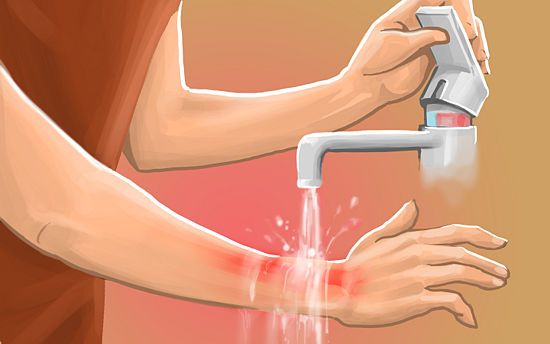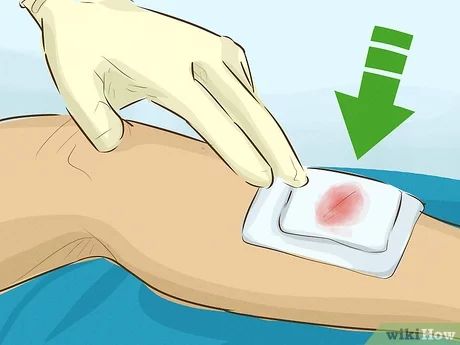Why are wounds more difficult to care for in the summer? In a high temperature environment, the wound is like being placed in a "bacteria petri dish". The sodium ions in sweat stimulate nerve endings and cause itching. The body temperature above 37°C accelerates the accumulation of metabolic waste, resulting in increased redness, swelling, heat, and pain. Blind scratching at this time may tear the new tissue, and incorrect cold compresses will make the situation worse. How to scientifically relieve the discomfort of summer wounds? The answer lies in the combination therapy of "cold patch + hydrogel dressing".

Cooling Gel Patch different from a hydrogel dressing?
Medical grade Cooling Gel Patch dressing, which is composed of a non-woven fabric lining layer, gel layer, polyethylene film covering layer, etc. The cooling gel patch with a physical cooling effect is combined with natural plant abstract cream, which can effectively relieve various symptoms such as fever, headache, fatigue, dizziness, etc. It contains polymer hydrogel and achieves 5 hours of stable cooling through physical phase change.
Hydrogel dressings are usually composed of more than 90% water and hydrophilic polymer materials, such as polyvinyl alcohol, carboxymethyl cellulose, polyethylene glycol, etc. These polymers form a three-dimensional network structure through cross-linking technology, locking in moisture like a micro-sponge while allowing oxygen and nutrients to be exchanged freely. This structure gives it unique physical properties: it can keep the wound moist and absorb excess exudate, avoiding secondary damage caused by the adhesion of traditional gauze.
How to use the two products together correctly?
The first step is to clean the wound thoroughly and rinse with saline to remove sweat and dirt. The second step is to cut the hydrogel dressing to 2 cm larger than the wound edge to ensure that the entire inflamed area is covered. If the wound has a lot of exudate, you can first cover it with an alginate dressing to absorb the exudate, and then overlay the hydrogel. The cooling patch is only suitable for cooling intact skin, and it is strictly forbidden to directly contact the ulcer.
Are there any particular requirements for the duration and frequency of cold compresses?
The hydrogel dressing should not be used for more than 4 hours at a time. Long-term application may cause skin maceration. It is recommended to remove it every 2-3 hours to check the skin condition. If pallor or wrinkles appear, stop for 30 minutes. For patients with burns and scalds, the "cold compress-exposure" cycle therapy can be used: cold compress the hydrogel dressing for 20 minutes, remove it for 10 minutes to let the skin breathe, and avoid low-temperature burns.
Which wounds are best suited for this combination therapy?
Postoperative incisions are more susceptible to infection in the summer due to sweat infiltration. Hydrogel dressings can both reduce temperature and maintain a moist environment, promoting epithelial crawling. Using cooling patches for insect bite dermatitis may aggravate allergies, while the moisturizing properties of hydrogels can dilute histamine concentrations and relieve itching. However, it should be noted that cold compresses are prohibited for ischemic wounds such as diabetic foot ulcers; otherwise, tissue necrosis will be aggravated.

What are the misunderstandings about storage and usage?
Hydrogel dressings need to be stored in a dark place below 25°C. The high temperature will cause the gel to denature and become ineffective. A patient once used the dressing after leaving it in the car in the sun, which resulted in contact dermatitis. Children should undergo an allergy test on the inside of their wrists before use. If erythema appears, stop using it immediately. In addition, the dressing should be used up within 24 hours after opening to avoid the growth of microorganisms.
The essence of wound care in summer is "cooling + controlling humidity + preventing infection". Cooling patches are suitable for rapid relief of healthy skin, while hydrogel dressings are the key to wound management. The cooler the cold compress, the better. Only scientific combinations can help wounds survive the summer. For more information on Innomed®Cooling Gel Patch, refer to the Previous Articles. If you have customized needs, you are welcome to contact us; You Wholeheartedly. At longterm medical, we transform this data by Innovating and Developing Products that Make Life easier for those who need loving care.
Editor: kiki Jia

 English
English عربى
عربى Español
Español русский
русский 中文简体
中文简体








